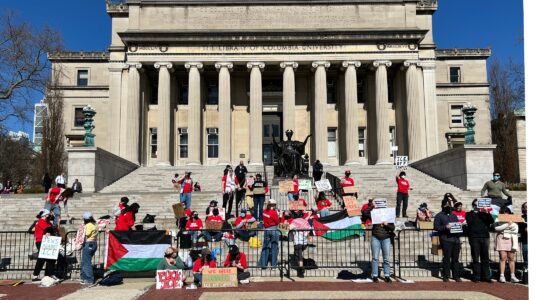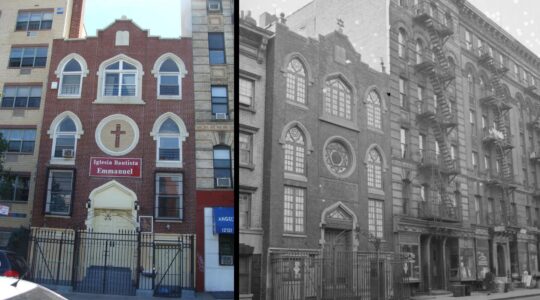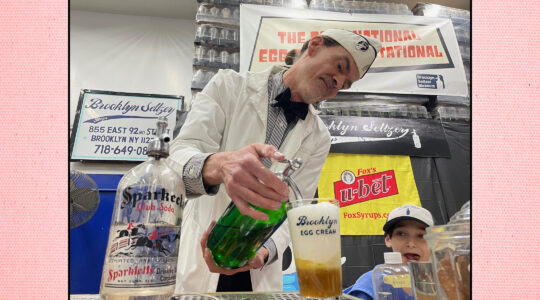It’s springtime in Manchester, London’s gritty northern sibling, which sits quietly ignored by most visitors to the U.K. Though nary a green shoot has yet this year to emerge from the ground, a glance around reveals a city in long-awaited blossom.
Over the past two decades, city planners have taken laborious efforts to shake off its grimy, industrial-era image. Smokestacks disappeared from the skyline, replaced by the soaring glass angles of architect-designed museums. Grand imperial buildings were meticulously scoured, uncovering elegance beneath the soot. The decaying waterfront was refashioned as an arts complex with international ambitions.
Really, all but the climate has been overhauled in recent years. The weather remains epically awful — a perpetual cold drizzle, with muted sunshine cause for outright jubilation.
But for those curious about what a middle-class English city looks like — what lies beyond the cosmopolitan glamour of London or the storybook villages — Manchester, with its booming live-music scene and pleasant waterfront, is a pretty cool discovery. Urbanites and hipsters will enjoy it as a side trip from London, and poets and lovers will find Manchester is an ideal gateway to the neighboring Lake District.
Perhaps the best reason to come here is the simple fact that everybody knows London. But nobody knows Manchester, the home of cultish bands — Joy Division, Oasis — and, of course, two of the world’s most prestigious soccer teams. Those are Manchester United, the Yankees of the international “football” world, and Manchester City, traditionally the second team but tops in the English Premier League this year.
And this month, Manchester dons the green for its annual Irish Festival. Protestants and Catholics put aside their longtime differences for two weeks of lilting revelry, held at venues around town from the March 2 through 18. You’ll find hand-knit fisherman sweaters and Irish lace, live Gaelic bands with sing-along nights, Riverdance-style dance shows, film nights and art exhibitions. It’s all capped off with the 16th annual St. Patrick’s Day Parade.
Along with Irish, Scottish and Chinese minorities, Jews have been part of the Manchester mix since the 1780s, when the first German-Jewish immigrants settled here. They were joined in the 19th century by Sephardim from around the Mediterranean, most of whom worked as shopkeepers and merchants in the city’s thriving “schmatte business” — the textile industry.
Waves of Ashkenazim from Eastern Europe enriched the community. While many Jews fled or emigrated during World War II, Holocaust survivors, Hungarians and Iranians arrived after the war to rebuild Manchester Jewry. Today, haredim make up the fastest-growing segment of the Jewish population.
The collective story of Manchester Jewry is documented at the Manchester Jewish Museum, the U.K.’s only such institution outside of London. Its home is the grand circa-1874 “Spanish & Portuguese” Synagogue, a Moorish masterpiece that is Manchester’s oldest surviving shul and original Sephardic temple. The synagogue had fallen into disuse as demographics shifted before it was happily repurposed as a museum in the ’80s. In addition to its collection of photographs, documents and artifacts, it offers frequent public lectures on topics of Jewish interest.
Little remains of bygone eras down at the Salford Quays, an erstwhile industrial waterfront on the Manchester Shipping Canal. Having outlived the bustle of their shipping heyday, the docks were rotting unattractively until the city undertook a major urban renewal.
Today the waterfront is defined by the glass and metallic lines of the Lowry Center, a truly stunning complex that appears to float between sea and sky, reflecting both. The center opened in 2000 with two major theaters for opera, comedy and musical theater, as well as exhibition galleries. Plenty of people come here just to savor the view from the Lowry Center’s waterside cafés, and in fine weather, there’s an outdoor terrace overlooking the canal.
Shakespeare’s “Henry V” and Rogers and Hammerstein’s “The King and I” are late-winter highlights, while spring’s exhibition space is devoted to works by the center’s namesake — L.S. Lowry, a noted local landscape painter — and, currently, to a show about Scottish musician Annie Lennox.
Nearby is the Imperial War Museum North, which opened in 2002 as the latest of five locations of the world’s most comprehensive museum devoted to conflict (the original IWM is in London). It is housed in an eye-catching building designed by Daniel Libeskind, who — being from postwar Lodz, another faded industrial city now in a rebirth of cool — knows a thing or two about urban regeneration.
While discussion-provoking exhibitions within explore the impact of war across various dimensions (family, cultures, weaponry), visitors can stroll outside to Libeskind’s nearly-100-foot viewing platform overlooking the Manchester Quays — another modern angle on an age-old waterfront.
All this culture goes hand in hand with a plethora of new dining options, as Manchesterites have been demanding the more sophisticated dining fare — including kosher options — found in London.
But Manchester at heart remains a bastion of the traditional, a champion of the old guard, where stodgy English classics are celebrated. While opera wafts from the shiny Lowry Center, across town in the warehouses of the city’s Northern Quarter, you can feel the grungy beats throbbing from underground clubs. From spruced-up Albert Square to dodgier back alleys, locals pile into gaslight-era pubs and raise hefty pints to Manchester United.
And if there’s a game on that day, good luck finding a stool.
The New York Jewish Week brings you the stories behind the headlines, keeping you connected to Jewish life in New York. Help sustain the reporting you trust by donating today.




